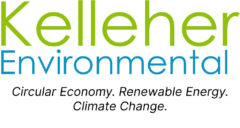Are there impacts on human health?
By: Maria Kelleher
Solid Waste & Recycling Magazine – 2000-06-01
Dioxins are a group of chemicals in the halogenated aromatic hydrocarbon family released by municipal and biomedical incinerators, and other sources. Public concern about the health impacts of dioxins has led to the cancellation of several proposed municipal waste incinerators in Canada and the United States in the last decade. But what’s the science behind the concern about human health impacts?
Toxicology
The most studied dioxin — 2,3,7,8-TCDD (tetrachlorodibenzo-p-dioxin) — is also the most toxic of the Chlorinated Dibenzo-p-Dioxins (CDDs). The “2,3,7,8” designation refers to the location of the chlorine molecules on the carbon rings. The World Health Organization considers it a human carcinogen. The U.S. Department of Health and Human Services says that it’s known to cause cancer. The US EPA currently identifies 2,3,7,8-TCDD as a probable carcinogen and currently sets a limit of 0.00003 micrograms/litre in drinking water, but this limit will probably change based on the results of a new study. The U.S. FDA recommends not eating fish with a level of 2,3,7,8-TCDD higher than 50 parts per trillion.
“Regulatory efforts in the U.S. have resulted in a 75 per cent reduction in dioxin levels from known large industrial sources since 1987.”
Dioxins and 2,3,7,8-TCDD are not produced naturally and are generally byproducts of:
incineration of municipal waste contains both carbon (e.g., from newspapers) and plastics or other materials that contain chlorine (e.g., PVC toys and containers);
incineration of hospital wastes (which contain large amounts of PVC); and,
industrial exposure in the manufacture of products (e.g., herbicides).
A recently released U.S. EPA study shows that regulatory efforts in the U.S. have resulted in a 75 per cent reduction in dioxin levels from known large industrial services since 1987.
TCDD is very stable and has a half-life of seven years in the human body.
Diet is estimated to be the source of 90 per cent of the dioxin found in humans. TCDD tends to travel in the air and settles on leaves and grass where it’s eaten by animals. TCDD biomagnifies through the animal food chain and is then ingested by humans (who consume animal products such as meat and eggs). Breast milk is a major source, as dioxins concentrate in fatty tissue in the human body.
Exposure can also occur through breathing low levels in the air, drinking low levels in water, skin contact with some pesticides and herbicides, and occupational exposure in industries that may produce CDDs (such as incinerators, pesticide plants or some pulp plants).
At high concentrations, TCDD causes the skin condition chloracne, discolouration and excessive body hair. High exposure can also cause liver damage (shown through changes in blood and urine) and can also induce long-term alterations in glucose metabolism and subtle changes in hormonal levels. It has carcinogenic and non-carcinogenic effects, including developmental impacts for children.
Case studies
Historically, the impacts of TCDD were studied extensively through animal laboratory experiments but these experiments were difficult to apply to the human population because TCDD impacts vary widely between different animal species. The best human health impact data for TCDD comes from studies of exposure in industrial settings or through industrial accidents.
One research project studied causes of death for 5,132 workers in twelve U.S. chemical plants. The standardized mortality ratio (SMR) for the group as a whole was 1.13, a significant but modest excess. However, in the sub-set analysis with increased cumulative exposure to TCDD, there was a significant trend to increased SMRs for all cancers, with a 60 per cent increase in SMR in people with the highest exposure.
Italian epidemiologist Alberto Bertazzi heads a team of researchers that studies the long-term health impacts of a July 1976 explosion at a pesticide manufacturing facility in Seveso, Italy that spread a dioxin cloud over 2,000 households. The area was divided into zones based on levels of exposure; in one zone the rate of liver cancer rate is three times that of the general population. Rates of leukemia, multiple myeloma and certain soft tissue sarcomas are elevated. (Rates of breast and uterine cancer are lower, which is consistent with the theory that TCDD acts as an anti-estrogen.) It is worth noting that the most significant health impact of the explosion appears to be increased stress from worrying about getting cancer.
The U.S. EPA plans to release a draft risk reassessment of dioxin within the next few months. Early reports of the content (obtained by the Washington Post in May 2000) point to higher cancer risk estimates than previously noted. These estimates are based on human epidemiological studies from Europe and North America. (SW&R plans to report on this in an upcoming edition.)
Source reduction
The best approach to limit exposure is to minimize or eliminate the formation of TCDD in the first place. The Canadian pulp industry did this in the late 1980s to early 1990s through the substitution of chlorine dioxide for pulp bleaching. Dioxin levels from most (if not all) Canadian pulp mills are now below detection limits. Changes to the bleaching process virtually eliminated TCDD formation at most mills.
Two significant actions can further control TCDD: imposing stringent emission requirements on incinerators and monitoring or limiting food products where TCDD accumulates.
Ontario has stringent requirements for new municipal waste incinerators, limiting dioxin emissions to six nanograms per cubic metre. Any incinerator undergoing an expansion must upgrade to meet this standard.
Maria Kelleher is director of resource efficiency with Enviros-RIS, based in Toronto, Ontario.
